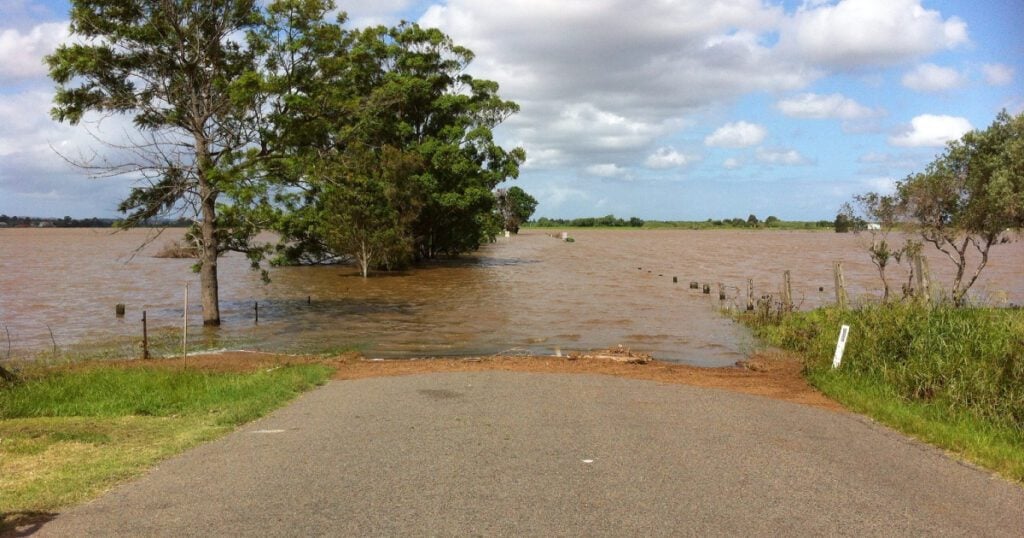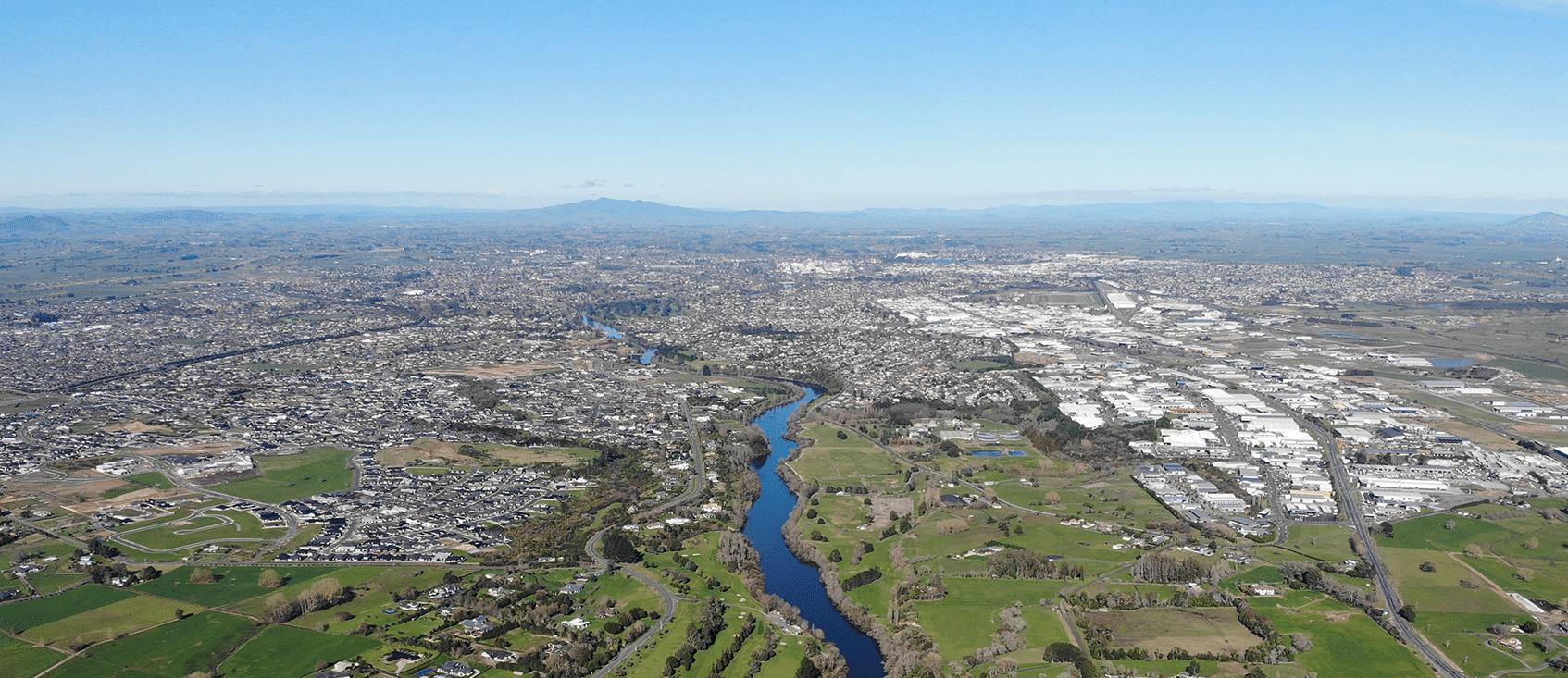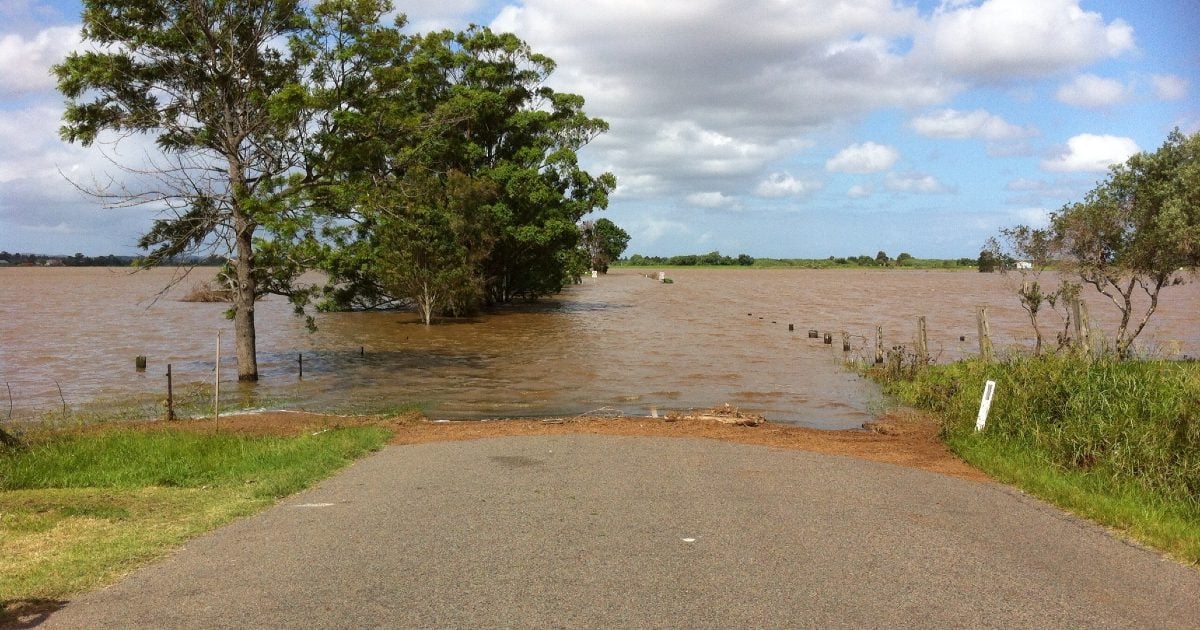How to manage cashflow over Christmas
Everyone loves the middle of summer and spending time with family and friends over Christmas, but it can be a challenging time of year for many small and medium-sized Kiwi businesses.
According to a poll conducted by the Employers and Manufacturers’ Association, more than half of businesses experience cashflow constraints between January and March.
It’s hardly surprising. The period after Christmas is traditionally slow for many companies, with people away enjoying their holidays. Consumers also tend to reduce spending after the expensive Christmas and New Year period.
Businesses can come under pressure for a number of reasons. Earnings will be down if companies shut over the break, while others will feel the pinch if they have paid bonuses before the end of the year.
Considering these facts, it’s understandable that many businesses struggle to manage cashflow and make provisional tax payments on 15 January every year.
Unfortunately, Inland Revenue (IR) doesn’t factor in these seasonal challenges. IR charges taxpayers 5.04% late payment penalties and 10.91% use of money interest (UOMI) if tax is not received on the due date (as at November 2024).
Your options for managing cashflow
What are the best options for businesses that want to manage cashflow and free-up money over the summer?
Tax pooling is IR-approved and can be used to defer provisional tax payments to a time that suits the taxpayer without incurring late payment penalties and UOMI.
This method is cheaper than using many traditional forms of finance. And tax pooling doesn’t affect existing lines of credit. Also, no credit checks or security are required.
The full amount of finance doesn’t need to be paid back if less tax is owed than first thought. The finance arrangement can be easily extended as well.
How tax pooling can help
Say you want to defer a $5,000 provisional tax payment for six months. You would pay TMNZ a one-off, tax-deductible interest amount and TMNZ would arrange the $5,000 provisional tax payment on your behalf.
The interest amount is based on the amount of tax financed and the period of maturity, so in this instance, it would be roughly $205.
The provisional tax payment is held in an IR account administered by the Guardian Trust. Guardian Trust instructs the IR to transfer the tax into your IR account when you repay the $5,000 principal in six months’ time.
The IR treats the $5,000 provisional tax as being paid on time once the transfer is processed. It’s that simple.
Ready to ease your seasonal cashflow worries? Learn more about our tax finance options today.
Find our latest resources on tax pooling and calculating tax using the Standard Uplift method here.
Five top tips for paying 28 August provisional tax
Are you due to pay 28 August provisional tax?
For many businesses, this will be their first instalment of provisional tax for the 2025 tax year. It’s important to stump up what you owe on this date. Inland Revenue (IR) won’t hesitate to charge steep interest and late payment penalties if you don’t.
If you’re a business owner or operator, here are five useful tips to ensure you’re ready to pay 28 August provisional tax. For agents, you may also wish to share these tips with your clients to help them prepare.
1. Assess your cashflow
Now’s the time to look at the money coming in and going out of your business.
Cast your eyes over your accounts receivable report to see which customers owe you money. If required, ask them if they can sort their bill earlier. Conversely, see if you can buy more time if you owe suppliers money.
If cashflow is tight or you have a better use for the money, keep reading. There’s an option that lets you pay 28 August provisional tax when it suits you.
2. Be aware of the changes
If you’re a safe harbour taxpayer, be aware that despite the rule changes, IR will still charge LPPs at each payment date. You can find out more about the changes here.
3. Know your methods to calculate 28 August provisional tax
It’s important you are aware of the different methods available to calculate your provisional tax payments. For more information about the provisional tax methods available to you, see our Provisional Tax Guide.
4. Consider using tax pooling
An IR-approved tax pooling intermediary such as TMNZ can assist if cashflow is tight. Working with us allows you to pay 28 August provisional tax at a time and in a manner that suits you, without incurring late payment penalties. You can defer the full payment to a date in the future or pay off what’s due in instalments.
Paying via TMNZ also means significant savings on Inland Revenue use of money interest.
TMNZ holds date-stamped tax for you in its IR account. You pay TMNZ at the agreed future date or as and when it suits your cashflow.
5. If in doubt, consult a professional
Do you have any questions about 28 August provisional tax? Seek the advice of an accountant or tax advisor. They can determine the best provisional tax calculation for your business and help you manage your payments and cashflow.
If you wish to learn more about the provisional tax payment flexibility TMNZ offers businesses, get in touch
Information in this article is correct as at 30/7/24. You should consult with your tax advisor concerning all tax matters. Read our Terms and conditions.
How you can use tax pooling like a savings account
In business, cash is king, and being able to access funds quickly in a crisis can mark the difference between success and failure. In an unpredictable world, having the ability to access cash during challenging times can be priceless.
With tax pooling, companies can easily request refunds of provisional tax payments they have made at the year to date without waiting to file their tax returns. They can receive their refunds within a matter of days.
Tax can be one of the largest expenditure lines for a business, so flexibility is vital.
In this economic climate, it’s far from ideal to have large sums tied up with Inland Revenue (IR).
What if you can’t access the money in an emergency?
What if your profitability projections trend down over the year, meaning you’re likely to overpay?
For taxpayers with a 30 June year-end, the first instalment of provisional tax is due on 28 November. Every business and sole trader should ask themselves these questions, especially if their work is seasonal or cyclical in nature.
Businesses should also think about the accessibility of their funds if their income is difficult to predict or fluctuates due to factors such as commodity prices, adverse weather events, or the exchange rate.
Accessible tax money
Depositing tax payments into a tax pool can form part of an effective risk management strategy in times of uncertainty.
Look at it like depositing into a savings account with the added benefit of eliminating late payment penalties and IR interest. You can still access your funds if you need to, you’re covering yourself for tax time and possibly extending your time to pay.
How depositing provisional tax into a tax pool works
Tax pooling operates with the blessing of the New Zealand tax department. TMNZ has been a registered provider of the service since 2003.
Companies deposit their provisional tax payments into a shared pool instead of directly into their own IR account.
Each payment is date stamped as at the date it is made into the pool (e.g., 28 November). Funds are held in an account at the IR. This account is managed by an independent trustee, Guardian Trust.
A taxpayer holds their payments in the pool until it instructs TMNZ to transfer their deposits to their own IR account.
Taxpayers can request a refund from TMNZ of provisional tax deposits held in the pool at any time without having to file their tax return or an estimate with IR.
Refunds may be subject to meeting anti-money laundering requirements. (Corporate taxpayers also need to be mindful of imputation credit account impacts when requesting a refund of tax they hold in the pool).
A taxpayer typically instructs TMNZ to transfer their tax deposits to their own IR account once they finalise their tax return and know the amounts required at each instalment date to satisfy their liability for the year.
As the tax being transferred from the TMNZ tax pool to a taxpayer’s IR account has been date stamped to when it was originally paid into the pool, IR recognises it as if the taxpayer paid the whole amount on time.
This remits any IR interest and late payment penalties showing on the taxpayer's account.
Access previously paid funds
If you’re short on cash, tax pooling also allows you to temporarily withdraw deposits you hold in our pool.
You can access the amount of provisional tax funds you have deposited (minus an upfront interest cost). You also have the option to restore your deposit at the original deposit date once your cashflow situation has improved.
Buy some time
When preserving cashflow is high on the agenda, you can use a tax pool to defer upcoming provisional tax payments to a date in the future without incurring late payment penalties.
For example, someone with a 7 April terminal tax date could have up to 75 days from that date to settle their provisional tax.
Earn more interest if you’ve overpaid
If you have surplus tax remaining in the pool once you have transferred money to the IR to satisfy your liability, you can earn interest above the IR’s credit interest rate by selling the excess tax to other pool members that have underpaid for the year or have received a notice of reassessment from the IR.
Please note that this is subject to market demand.
The purchasing taxpayer can reduce the interest cost faced on their underpayment significantly when applying this tax against their liability. This also eliminates any late payment penalties.
Overpayers earn more interest while fellow taxpayers pay less. Everyone’s a winner!
Find out more
To learn more about managing your provisional tax, check out our calculating provisional tax guide and cashflow management tips for businesses.
Alternatively, please get in touch with our friendly support team if you have any questions. We're always happy to help.
Manage IR exposure with corporate tax pooling
With the 28 November provisional tax date fast approaching, now’s the perfect time to talk to larger clients about the benefits of TMNZ corporate tax pooling.
Tax pooling is an Inland Revenue-approved system to help New Zealand businesses manage their provisional tax. Instead of paying the IRD directly, taxpayers can purchase overpaid tax from other tax pool members and pay into the tax pool when it suits them.
As some businesses overpay tax when they have funds to spare, they help to cover other taxpayers that need a bit more time to meet their obligations. We like to think of it as businesses helping businesses.
TMNZ is proud to be New Zealand’s original tax pool, pioneering the concept in 2003. We haven’t looked back since, helping large businesses, SMEs, and sole traders with tax management.
With tax pooling, businesses that can’t meet their provisional tax liabilities can purchase tax from those that have overpaid. This is charged at a lower interest rate than the IRD’s use of money interest charges, and companies also avoid late payment penalties.
There are advantages on both sides of a tax pool. Companies that have overpaid into our pool can also earn more interest on their surplus tax than if they had paid the IRD directly.
Clients that experience volatility or pay substantial amounts of provisional tax (e.g., more than $100,000 at each date) can reduce their exposure to use of money interest by paying provisional tax into the Guardian Trust/TMNZ tax pool account at Inland Revenue (IRD) rather than directly into their IRD account.
In summary, here are all of the ways corporate tax pooling is great for large companies:
- Companies earn more interest on surplus tax than they would if they overpaid the IRD.
- Tax can be purchased if businesses have underpaid income tax.
- Tax can be swapped across provisional tax dates to reduce exposure to use of money interest.
- Overpaid tax can be refunded within three to five days — without filing a return.
- Businesses can access TMNZ’s in-house expertise for corporate tax pooling advice on how to optimise their provisional tax payments.
- Money is deposited in the TMNZ tax pooling account at IRD.
What’s more, by using the TMNZ tax pool, you and your clients are also helping to give back to New Zealand. All our profit is invested in the Whakatupu Aotearoa Foundation, supporting social and environmental causes.
Contact us today to find out how TMNZ tax pooling can help your clients.
Using the Due Date on myIR statements may needlessly expose you to UOMI
Let's talk about how TMNZ can help you to avoid interest charges with payments at P3.
Unfortunately we're seeing many clients buying tax at the wrong dates. We believe this is caused by the confusing way Inland Revenue displays the Residual Income Tax liability on the myIR statements. If a taxpayer doesn’t meet the safe harbour threshold of less than $60,000 RIT for the relevant tax year, paying tax at terminal tax date will cost you Inland Revenue Use of Money Interest (UOMI).
Why is this?
- Inland Revenue myIR transaction detail statements show the tax due split on what amounts are liable for late payment penalties and what amounts are not.
- As late payment penalties are charged on the lesser of the standard uplift amounts and RIT/3 for all provisional tax dates, they will usually show two amounts for the P3 date. The standard uplift amount will be shown as due at P3, and the balance of current year RIT will be shown as due at the Terminal Tax date.
- However, what is not clear on myIR is that use of money interest will be charged on the combined P3 total, from P3 to the date the tax is paid.
- So those that are not transferring the combined total at P3 but transferring the amount at the terminal tax date, will incur interest from the P3 date.
How can I stop this?
When transferring or purchasing tax from the TMNZ tax pool, you should be doing this for the combined P3 amount at the P3 date. This will mean you avoid interest charges.
To find out more, get in touch.
Disclaimer: This article is correct as at 19 April 2022. It is subject to change.
Survey indicates property market cooling due to confusion
News release: Chartered Accountants Australia and New Zealand and Tax Management New Zealand
26 November 2021
A survey of chartered accountants and tax agents has revealed that incoming legislation intended to help cool New Zealand’s over-heated housing market is already having a major effect on investors – but largely because of confusion and lack of detail rather than clear policy.
The annual survey, jointly run by Chartered Accountants Australia and New Zealand (CA ANZ) and TMNZ, sought the views of 361 accountants in public practice, on recent tax policy developments.
Among the findings, the survey revealed that 70% of respondents have already seen clients change or voice their intention to change their residential property investment behaviours due to ongoing changes to the extended bright-line test, and proposed changes to deny interest deductions.
CA ANZ NZ Tax Leader John Cuthbertson said that further results from the survey show to key factors in play; the complexity of the proposed rules, and uncertainty as the details could change before the legislation is enacted in March 2022, despite the bright-line and denial of interest deductions coming into play from earlier this year.
“The survey suggests that the housing market has been given a policy placebo, in the form of legislation that is influencing behaviour before it is fully developed and enacted.”
“Residential property purchasers and investors typically react to the specific detail of legislation. However, in this case the market appears to be reacting to the complexity of the proposed legislations carveouts and inconsistencies, and the fact that it won’t know exactly what is in place until March 2022, despite it being backdated to capture activity in 2021.”
“To be fair, the Government’s aim was to cool down the overheated housing market, which is causing a range of economic and social issues, but we’re not sure this is the best way to do it.”
The survey shows that over 21 per cent of the respondents, or 1 in 5, feel ‘not at all confident’ about advising clients on the proposed new build interest limitation rules, and over 65 per cent of participants felt the phase out and denial of interest deductions would be somewhat or extremely difficult to comply with.
Similarly, almost 50% of respondents said they were either somewhat confident, or not at all confident on advising on the new build bright-line test.
“Because this policy hasn’t been developed in line with the generic tax policy process (GTPP), there’s a much higher chance of unintended consequences and collateral damage. The survey shows a considerable lack of confidence in how the legislation will work, and that will likely result in non-compliance and issues around who is captured and who isn’t.”
“It’s important to note that the level of complexity encountered will depend on the number of properties owned, banking arrangements in place and the mix of interest limitation rules and concessions in play,” added Mr Cuthbertson.
TMNZ Chief Executive Chris Cunniffe said the survey provides a good indication of how the proposed rules would be rolled out.
“In their current complex form, there’s likely to be a lot of variability in compliance with these laws. Especially as not everyone has a tax agent or accountant helping them.”
“While the extension of the bright line test to 10 years might land well for most mum and dad property owners, the denial of interest deductions and how that relates to new builds is likely to be misunderstood.”
“There’s opportunity for Government to provide greater clarity on the law changes and simplify certain aspects to help owners and accountants alike.”
New Survey Shows Inland Revenue Helpful, But Hindered
Press Release: Chartered Accountants Australia and New Zealand and Tax Management New Zealand
24 November 2021
Helpful, but hindered is the overarching finding in a new survey digging into public practice accountants’ experiences with Inland Revenue (IR).
Conducted by Chartered Accountants Australia and New Zealand and TMNZ, the survey of 361 members in public practice asked a range of questions about the timeliness of IR’s service, the quality of interaction, and the business support on offer.
“Over 80 per cent of those surveyed rated their agent account manager interactions positively over the last 12 months, which Inland Revenue should be pleased with,” said CA ANZ NZ Tax Leader John Cuthbertson.
“The flipside is that it is taking much longer for Inland Revenue to resolve queries. The number of public practitioners who say it’s taking more than 6 days to resolve their queries has risen from 5 per cent of respondents, to 47 per cent.”
Despite this, accountants and tax agents are positive about not only their interactions with account managers, but also the support measures that Inland Revenue has administered.
“Accountants and agents across New Zealand are telling us that the tax support provided by Inland Revenue has been as effective this year, as it was last year,” said Tax Management New Zealand Chief Executive, Chris Cunniffe.
“It’s been another turbulent year for businesses, and the tax relief and support measures have made a positive difference. It’s just that our survey shows it can take a while to get through to Inland Revenue, and to have queries resolved and assistance locked in.”
The appreciation of Inland Revenue’s support was illustrated by 85 per cent of participants reporting that they had clients who utilised the remission of interest and penalties for late payment of provisional tax due to COVID.
Additionally, over 71 per cent of participants have found it easy or not difficult, to enter into or assist clients with an instalment arrangement in the past 12 months. This covers all types of tax, including GST, PAYE and FBT, not just provisional tax.
The increased level of scrutiny and information required to access COVID support was also felt by survey respondents.
“Approximately half the survey respondents said that accessing COVID support was harder than in 2020. That’s not surprising, given the public’s desire for more scrutiny about who received support, and the declarations becoming more stringent during this year’s lockdowns,” concluded Mr Cuthbertson.
Cashflow relief for farmers impacted by flood or drought

Those impacted by flooding in Canterbury or drought elsewhere in New Zealand have another option to manage their cashflow.
It’s called tax pooling.
It lets taxpayers defer their upcoming provisional tax payments to a time that suits them, without incurring interest (currently seven percent) and late payment penalties from Inland Revenue (IRD).
The service – which has been operating with the blessing of the taxman since 2003 – is available through an approved commercial provider such as Tax Management NZ (TMNZ).
The impact of extreme weather
The Government has declared the recent flood in the Canterbury region as a medium-scale adverse weather event.
As those in this part of New Zealand assess the damage and begin the clean-up following the large deluge of rain, a big dry is beginning (or, in some cases, continuing) to bite other parts of New Zealand. The drought has been classified as a large-scale adverse weather event.
Farmers impacted by these contrasting weather events are being encouraged to act early and assess their options if they need assistance.
For those battling drought, some tough decisions around stock and feed will need to be made. In the Canterbury region, flooding only compounds the financial pressure as many were also dealing with drought beforehand.
Cashflow will be important during this difficult period.
Help is available
Managing tax payments will be a key consideration in managing cashflow too.
IRD, to its credit, is exercising some discretion.
It will allow farmers and growers affected by the Canterbury flood to make early withdrawals from the income equalisation scheme.
For those whose current or future income will be significantly affected by drought, IRD will allow late deposits for the 2019-20 income year up to 30 June 2021.
Early withdrawals are also available in the case of a medium-scale adverse event or if someone is suffering serious hardship.
Please note a taxpayer must satisfy certain criteria for IRD to exercise its discretion around the income equalisation scheme.
There's also the option of re-estimating provisional tax.
However, while that allows someone to get a refund of tax they have paid earlier in the year, it does come with some risk.
Free up cashflow by deferring payment of provisional tax
Farmers growers with a May balance date are due to pay their the final instalment of provisional tax for the 2020-21 income on 28 June.
For a small interest cost, someone can use TMNZ to defer this payment.
We make a date-stamped tax deposit to IRD on behalf of a taxpayer on 28 June and the taxpayer pays us when it suits their cashflow.
A taxpayer can either pay the full tax amount at a date of their choosing or enter an instalment arrangement.
When a taxpayer satisfies their arrangement with TMNZ, IRD will treat it as if the taxpayer had paid on time. Any interest and late payment penalties showing on their account will be remitted.
A taxpayer has up to 12 months to pay their 28 June provisional tax with TMNZ.
TMNZ’s interest cost is much cheaper than what IRD charges when someone pays their tax late.
Please click here to register with TMNZ. Alternatively, feel free to contact us if you have any questions.
Can AIM taxpayers use tax pooling?
A taxpayer cannot use tax pooling to defer payment of, or settle, provisional tax instalments calculated under the accounting income method (AIM).
However, TMNZ can help AIM taxpayers with terminal tax or when they receive a notice of reassessment.
What does tax pooling legislation say about AIM?
Legislation in the Income Tax Act 2007 clearly states that a taxpayer can use tax pooling funds to satisfy “a provisional tax liability other than under the AIM method”.
Please refer to sections RP17-RP21 of the Act for further information.
Why IR doesn’t allow tax pooling to assist with AIM payments?
Inland Revenue (IR) says tax pooling manages taxpayers’ uncertainty around provisional tax payments and their exposure to interest.
Consistent with this objective, tax pooling is not currently available for tax types where someone has certainty of their liability at the time of payment (for example, GST).
Given the payments made under AIM are calculated on actual accounting profit, taxpayers will have certainty about what's due.
As such, it's IR’s view that it's not appropriate to allow tax pooling for provisional tax payments calculated under AIM.
What does that mean for you?
IR will reject the use of any tax pooling funds to satisfy an underpaid AIM instalment. As a result, late payment penalties and interest will continue to show on a taxpayer account.
They will, however, accept the use of tax pooling funds to settle a terminal tax liability. The same applies if an AIM taxpayer has additional tax to pay after receiving a notice of reassessment.
Please be mindful of these facts when entering arrangements with TMNZ.
It’s also an important consideration before electing to use AIM to calculate provisional tax.
That's because paying tax when income is earned is not necessarily the same as when cash is received.
If someone is unable to pay an AIM instalment on time or in full due to cashflow constraints, the safety net of tax pooling will not be available to reduce their exposure to interest and eliminate late payment penalties.
Feel welcome to contact us if you have any questions.
Make IR interest, late payment penalties disappear
A missed or underpaid provisional tax payment often means a taxpayer is faced with a steep interest cost and potentially late payment penalties on top of what they owe.
However, tax pooling can make that go away.
A big frustration with Inland Revenue (IR) is that it expects taxpayers to pay the correct amount of tax on the dates it sets. No ifs, no buts.
Fail to adhere to this rigid timetable or underpay and you will face the consequences.
IR charges interest – 9.89% as at 8 May 2025 – from the date the payment was due until you pay the outstanding amount.
Late payment penalties may also apply as follows:
- One percent the day after payment was due.
- An additional four percent if the tax amount (including late payment penalties) remains unpaid after seven days.
A tax pooling provider such as TMNZ operates with the blessing of IR. It can be of assistance if taxpayers find themselves in this situation.
Where might this be useful?
In the event you missed your recent 7 May provisional tax payment – or any other instalment relating to the 2020-21 income year, for that matter – we can eliminate any late payment penalties for which you may be liable and significantly reduce the interest you pay.
You make your payment to TMNZ and we apply backdated tax that was paid to IR on the original date(s) it was due against your liability.
The taxman treats it as if you paid on time once it processes this transaction.
This wipes any IR interest and late payment penalties showing on your account.
You have the option of making to TMNZ a one-off payment at a date of your choosing or making regular instalment payments towards your liability over a longer period.
TMNZ gives you up to 13 months to pay your 7 May provisional tax for the 2020-21 income year.
Is your 2020 terminal tax overdue?
You still have time to use TMNZ to reduce the interest cost and eliminate late payment penalties if you have outstanding provisional or terminal tax liabilities for the 2019-20 income year.
However, you will have to act quickly.
Tax pooling legislation gives taxpayers an additional 75 days past their terminal tax date to pay their terminal tax.
If your terminal tax for the 2019-20 income year was due on 7 April 2021, you would have until 15 June to settle owe with TMNZ.
Reassessed by IR
TMNZ can also assist with historic income tax payments and other tax types such as GST and PAYE if you receive a notice of reassessment from IR.
You have 60 days from the date the IR issues this notice to use tax pooling.
Please contact us if you have any questions.









